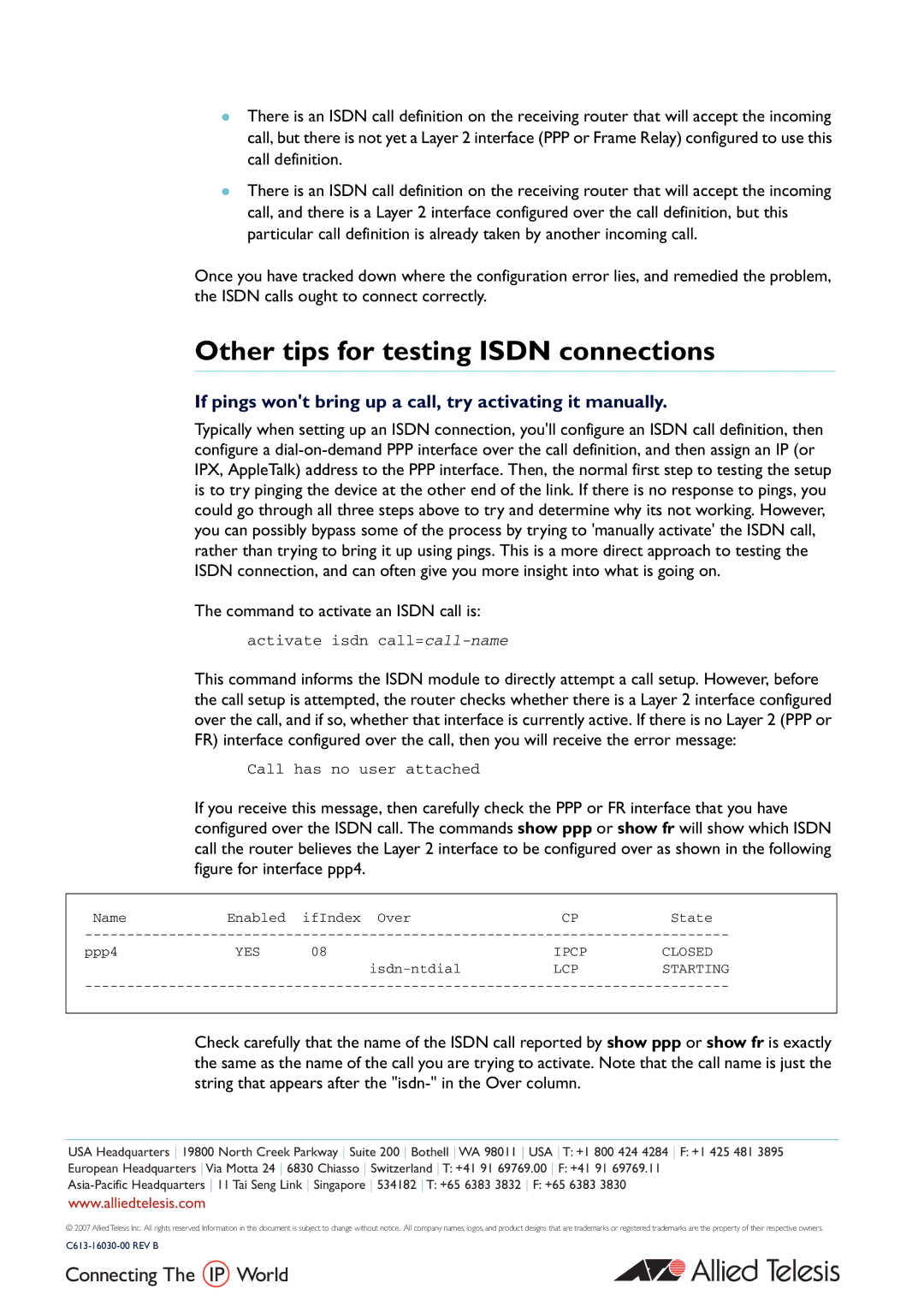
zThere is an ISDN call definition on the receiving router that will accept the incoming call, but there is not yet a Layer 2 interface (PPP or Frame Relay) configured to use this call definition.
zThere is an ISDN call definition on the receiving router that will accept the incoming call, and there is a Layer 2 interface configured over the call definition, but this particular call definition is already taken by another incoming call.
Once you have tracked down where the configuration error lies, and remedied the problem, the ISDN calls ought to connect correctly.
Other tips for testing ISDN connections
If pings won't bring up a call, try activating it manually.
Typically when setting up an ISDN connection, you'll configure an ISDN call definition, then configure a
The command to activate an ISDN call is:
activate isdn call=call-name
This command informs the ISDN module to directly attempt a call setup. However, before the call setup is attempted, the router checks whether there is a Layer 2 interface configured over the call, and if so, whether that interface is currently active. If there is no Layer 2 (PPP or FR) interface configured over the call, then you will receive the error message:
Call has no user attached
If you receive this message, then carefully check the PPP or FR interface that you have configured over the ISDN call. The commands show ppp or show fr will show which ISDN call the router believes the Layer 2 interface to be configured over as shown in the following figure for interface ppp4.
NameEnabled ifIndex OverCPState
ppp4 | YES | 08 | IPCP | CLOSED |
|
| LCP | STARTING |
Check carefully that the name of the ISDN call reported by show ppp or show fr is exactly the same as the name of the call you are trying to activate. Note that the call name is just the string that appears after the
USA Headquarters 19800 North Creek Parkway Suite 200 Bothell WA 98011 USA T: +1 800 424 4284 F: +1 425 481 3895
European Headquarters Via Motta 24 6830 Chiasso Switzerland T: +41 91 69769.00 F: +41 91 69769.11
www.alliedtelesis.com
© 2007 Allied Telesis Inc. All rights reserved. Information in this document is subject to change without notice. All company names, logos, and product designs that are trademarks or registered trademarks are the property of their respective owners.
